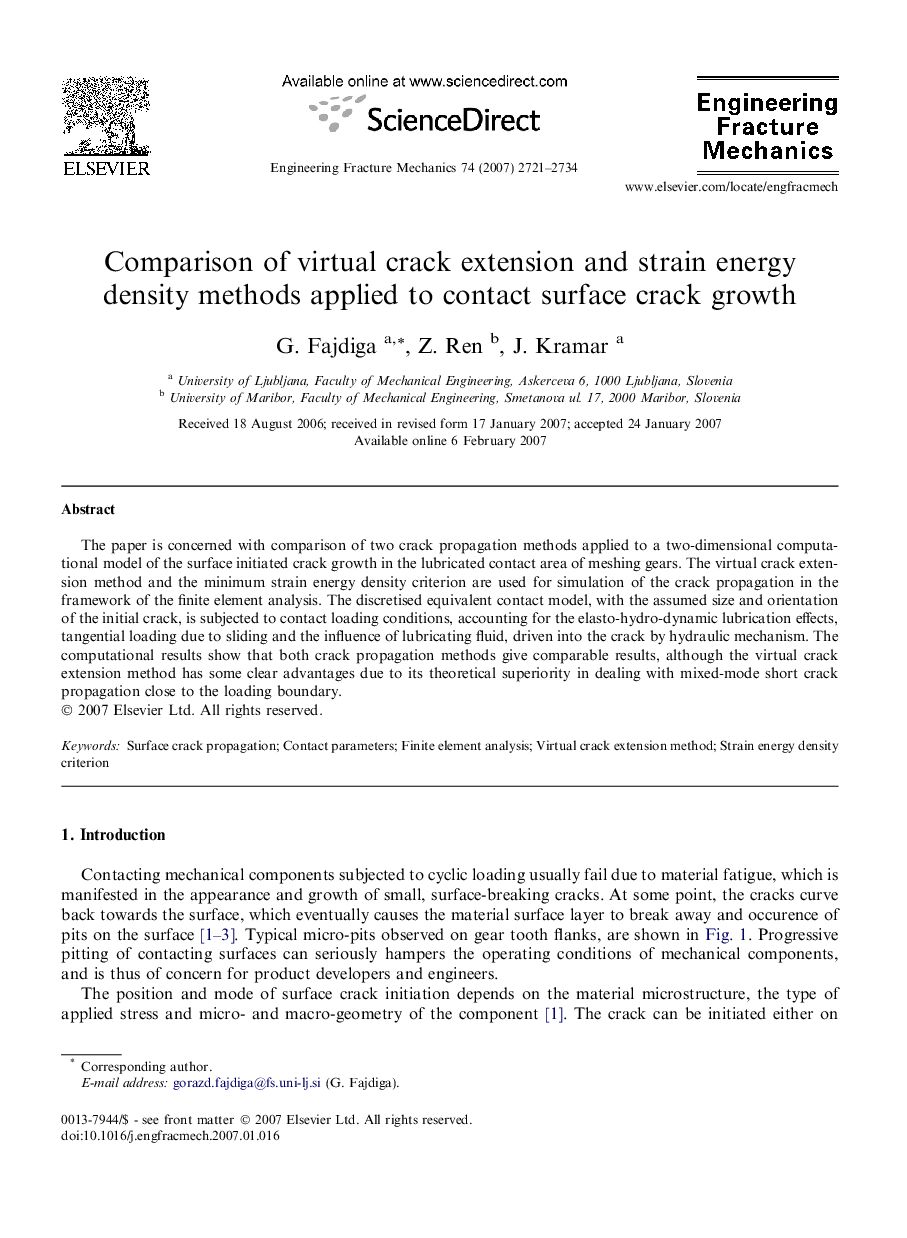| Article ID | Journal | Published Year | Pages | File Type |
|---|---|---|---|---|
| 771417 | Engineering Fracture Mechanics | 2007 | 14 Pages |
The paper is concerned with comparison of two crack propagation methods applied to a two-dimensional computational model of the surface initiated crack growth in the lubricated contact area of meshing gears. The virtual crack extension method and the minimum strain energy density criterion are used for simulation of the crack propagation in the framework of the finite element analysis. The discretised equivalent contact model, with the assumed size and orientation of the initial crack, is subjected to contact loading conditions, accounting for the elasto-hydro-dynamic lubrication effects, tangential loading due to sliding and the influence of lubricating fluid, driven into the crack by hydraulic mechanism. The computational results show that both crack propagation methods give comparable results, although the virtual crack extension method has some clear advantages due to its theoretical superiority in dealing with mixed-mode short crack propagation close to the loading boundary.
